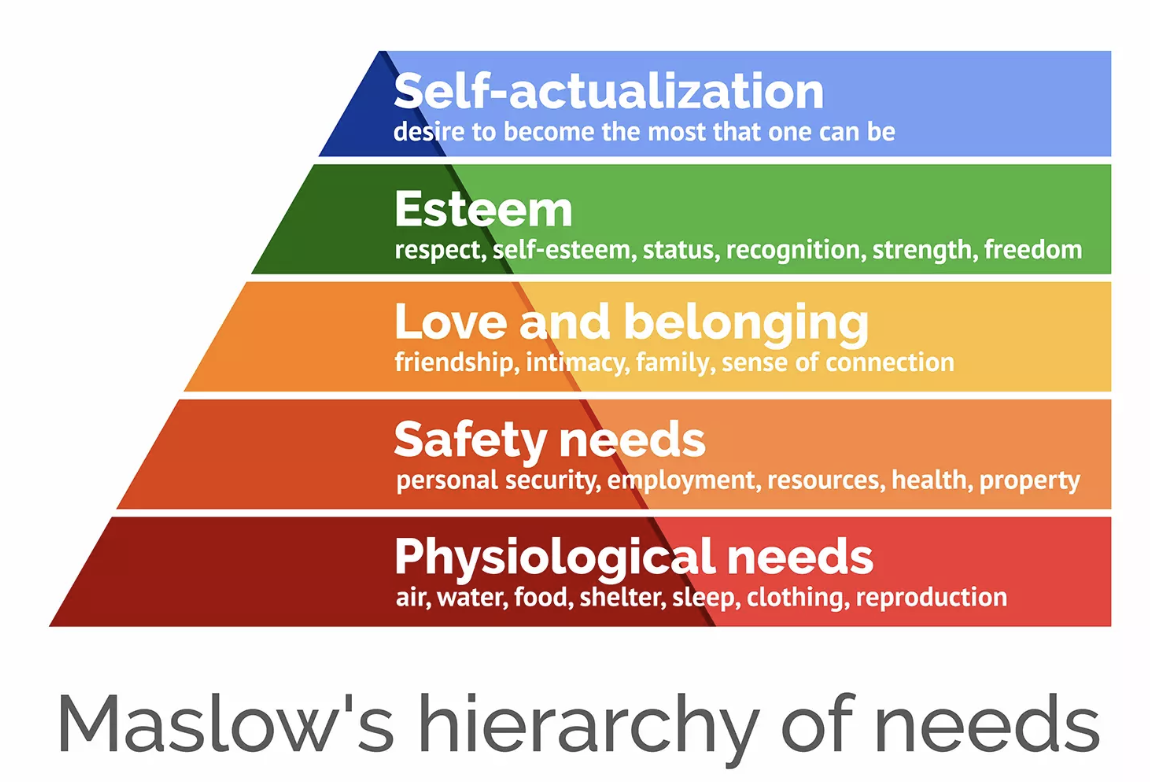Fulfillment of one’s life is the ultimate goal. We have a minimal amount of time on this planet and it’s our primary objective to ensure we capitalize on the greatest gift of all, life. What is advancement and how do we know that we are advancing through stages of life to the self-fulfillment stage? Understanding life’s stages in conjunction with our goals is vital to know where you stand in the broader picture. When we think of goals and success, common ideas associated with them are houses, money, cars, status, luxury, etc. Those things can be great if you have them in your vision, but it doesn’t always have to be the case. It’s essential to take a step back from material possessions and understand a more basic perspective. Our topic of discussion today revolves around Maslow’s Hierarchy of Needs and how a structured concept of progression and life fulfillment can guide us through understanding others’ perspectives, formulate goal setting, navigate relationships, and have a perspective on life that is often forgotten.

What is Maslow’s Hierarchy of Needs and how does it apply to life? Maslow’s hierarchy of needs is a motivational psychological theory comprising a five-tier model of human needs, often depicted as hierarchical levels within a pyramid. Starting with the bottom of the pyramid the needs are as follows: physiological needs, safety needs, love, and belonging needs, esteem, and at the top of the pyramid is self-actualization. Life is structured off these five tiers and over time we work towards the top of the pyramid, ideally. Some people achieve the top of the pyramid (self-actualization) sooner than others but realistically every person has their own personal challenges and obstacles to overcome.
Thinking about the pyramid from a very practical standpoint, we achieve higher levels of the pyramid the older we become. When we are very young, we seek life’s basics- air, food, drink, shelter, clothing, warmth, and sleep. As we age and become involved within society we seek safety needs- security and order, systems. Into adulthood, we have the desire to feel loved and have a sense of belonging- relationships, friendships, involvement, and areas we can make an impact. Evolving further into life, Esteem seeks respect, status, strength, recognition, and even freedom. Finally, self-actualization creeps into the overall picture as people seek to become the best person they can be. Now, I laid out the pyramid from an age perspective assuming everyone lived a “perfect” life. The important thing to note is that the hierarchy levels are independent variables from age. For example, a 45-year-old individual could still be seeking safety needs yet has obtained the fundamentals in life to survive also known as physiological needs.
Understanding what stage of Maslow’s Hierarchy of Needs someone is in might provide better context to what that individual is going through and how we can better relate to understanding a situation. Every choice we make has an impact to some extent on one of these categories within Maslow’s Hierarchy. It is critical that we 1) know what phase of the hierarchy are in, 2) create a plan to obtain the next level of the hierarchy, and 3) enjoy the journey towards the top. When life is simplified against Maslow’s Hierarchy of Needs it’s easier to have gratitude towards others and it provides us a roadmap for progression.
If this posting helps one person, then it is worth my time.
Jon French
